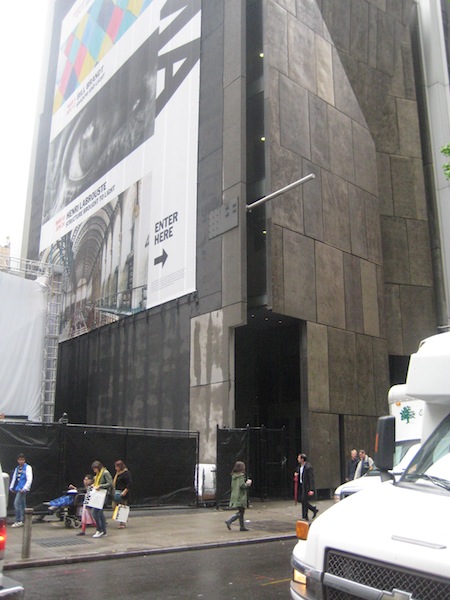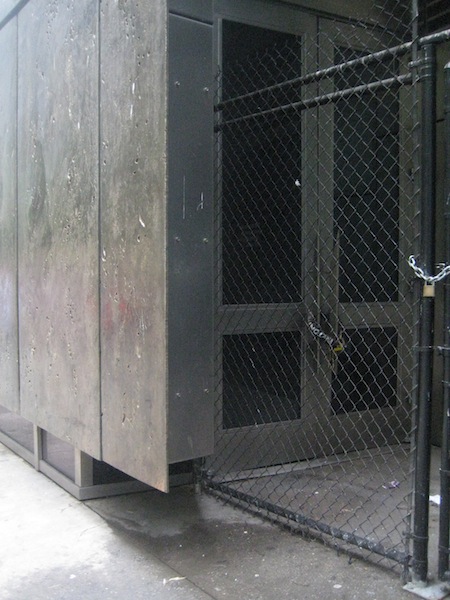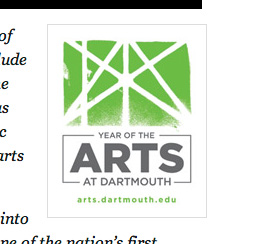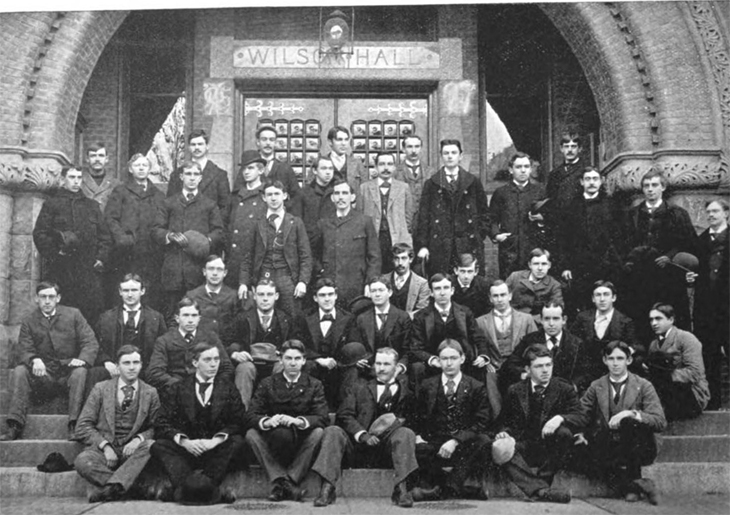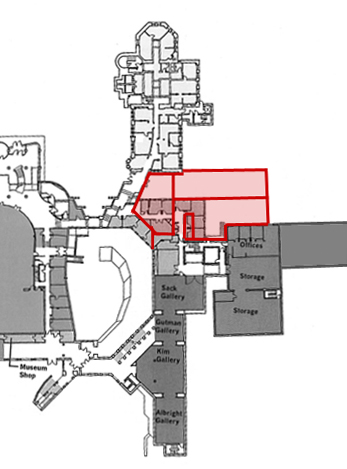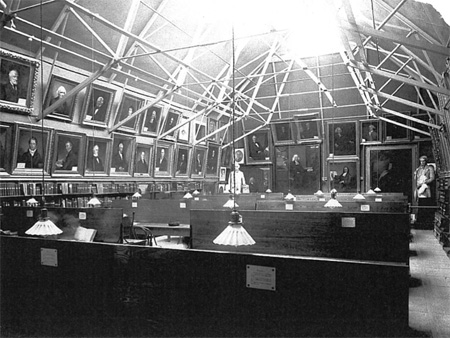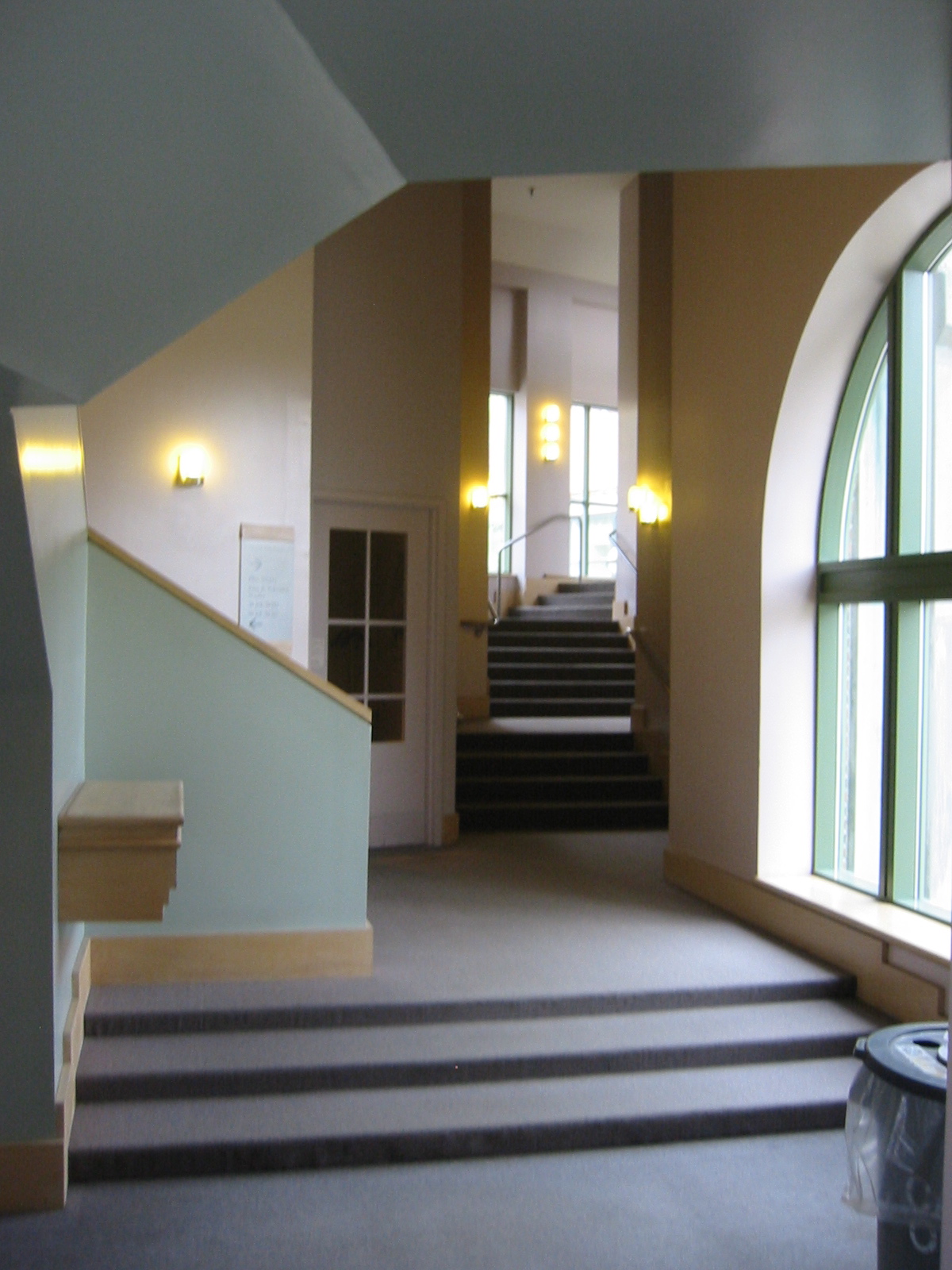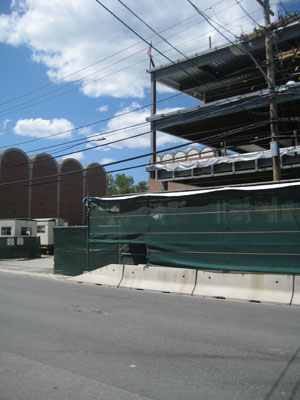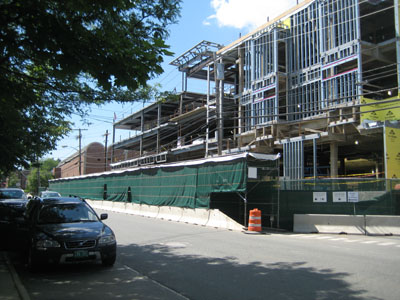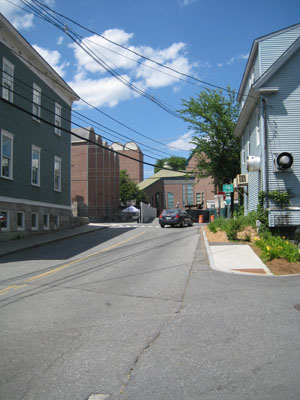I. Introduction
The nearing completion of the Visual Arts Center points up the current underuse of the site next door at the corner of Crosby and Lebanon Streets.
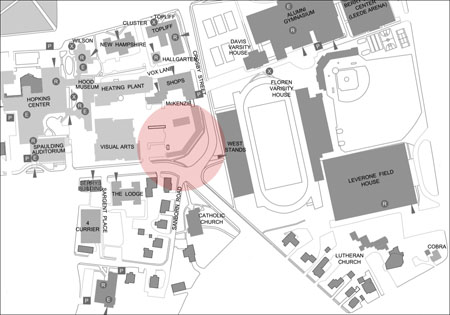
Existing conditions. All maps based on official campus map (pdf).
This is a large and important site. Whatever building goes here — let’s assume it is an arts-related building — will be visible to visitors arriving on Lebanon Street. It will need to be a gateway building, as the 2000 downtown Hanover plan illustrates so thoroughly. The Rogers Marvel 2002 Arts Center Analysis (pdf) also emphasizes the potential of this site on page 38.
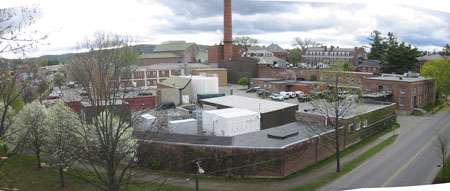
View to the northwest showing the corner, 2006.
The first impulse is to follow the footprint of the existing low-scale facilities building. But this site is not only large, it is also unusually malleable. The college and town might be able to relocate Crosby Street in radical ways to completely reshape the ground available for the gateway building.
Why might Crosby be changeable? Because it has been changed in the past. Crosby Street was first laid out in 1872, to separate the state farm on the east from the state college dormitory site and other buildings on the west.
Crosby Street originally ran straight through to Lebanon Street. It was not until the early 1960s that Crosby’s southern delta was given its current incongruously suburban form. When Dartmouth sought permission to close down South College Street for the Hopkins Center, the Town asked Dartmouth to rework Crosby Street in return, aligning the street with Sanborn Road to form an ex post facto four-way intersection.
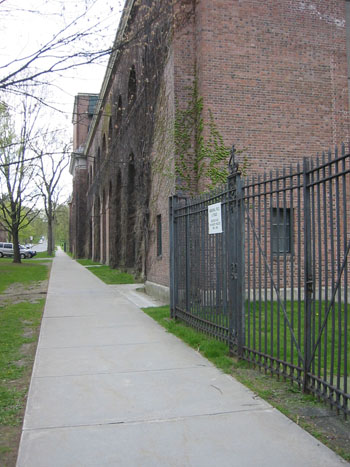
View to the north showing the front (west) facade of Memorial Field, 2006. The sidewalk preserves Crosby’s original alignment.
Should we worry about Sanborn Road if Crosby is realigned? No. In fact, the downtown Hanover plan proposes in text and an illustration that Sanborn Road be blocked off. Instead, Hovey Lane will give access to this neighborhood through a short outlet punched through to South Street (see map below).
Would the abandonment of Crosby Street’s current alignment open up any possibilities for a college building on the corner? Each of the following proposals assumes that McKenzie Hall/Shops on Crosby is preserved; Sanborn Road is rerouted; and commercial buildings are built on the college land along the south side of Lebanon Street.
II. The Maximum Arts
The gateway building could expand to fill all of the empty land added to the corner:
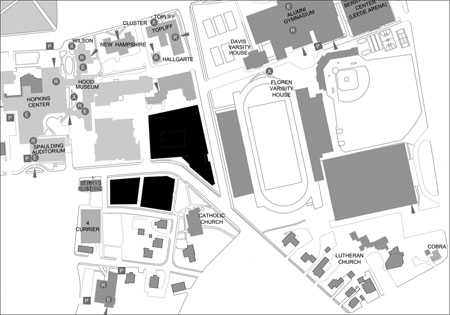
The maximum arts proposal.
This plan would block an important view of Memorial Field and make Crosby Street into a narrow tunnel. A good use of space, but not good preservation or townscape.
Some variation on this plan, however, might be a good one:
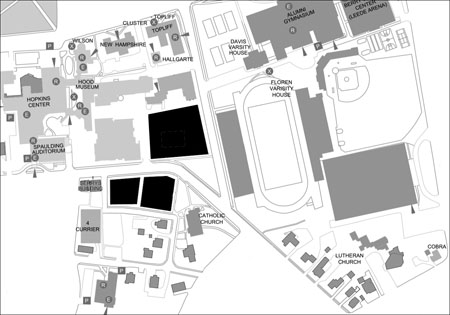
Variation on the maximum arts proposal.
III. The Minimum Arts
Crosby could be pulled to the west, adding a big empty lawn in front of Memorial Field:
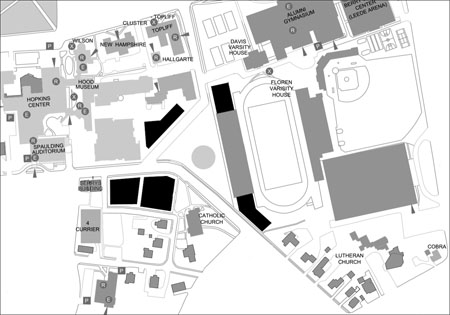 The minimum arts proposal.
The minimum arts proposal.
This plan would not make efficient use of space, and its creation of new lawns would not actually improve the view of Memorial Field.
IV. The Square and Temple
A big public square could be carved out of the surrounding buildings:
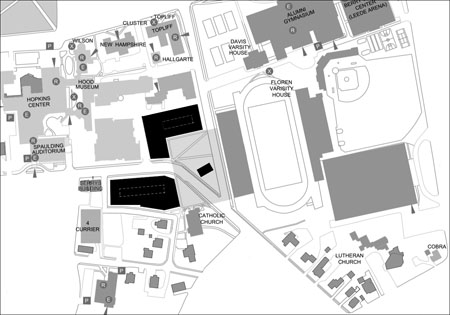 The square and temple proposal.
The square and temple proposal.
If the big square feels barren, a little temple that shares an alignment with nothing else could be dropped down in front of Memorial Field.
This plan would take advantage of the interesting fact that both Memorial Field and St. Denis Roman Catholic Church were designed in the early 1920s by Jens F. Larson. The two buildings appear to be perpendicular to each other, both aligned with Crosby Street.
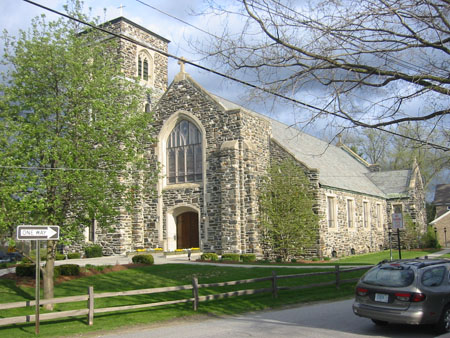
View to the southeast showing north (front) and west facades of St. Denis, 2006.
—–
[Update 11.17.2012: Broken link to Memorial Field image fixed.]
